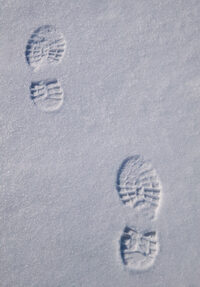 Plummeting temperatures and fallen leaves have been foreshadowing what this “year of the snowstorm” might look like, which is said to likely be the coldest since 2010/11. At this time of year, new potential hazards arise in the workplace – both outside and in – that need to be taken care of to prevent accidents.
Plummeting temperatures and fallen leaves have been foreshadowing what this “year of the snowstorm” might look like, which is said to likely be the coldest since 2010/11. At this time of year, new potential hazards arise in the workplace – both outside and in – that need to be taken care of to prevent accidents.
Here are 5 risks the employer needs to keep in mind when assessing whether suitable health and safety controls are in place and working sufficiently this year.
1 Shivering outside is more than just uncomfortable
Being cold is an unpleasant feeling that can seriously impact a worker’s judgement. The more you rush things, the more likely you are to make mistakes that can pose risks to the whole operation. If working outside for longer periods of time is necessary for a job, the employer needs to assure that workers take breaks regularly, have access to indoor facilities and wear appropriate clothing.
Gloves are required as soon as temperatures drop below 4°C since stiff fingers and limbs can cause manual handling to become very difficult and therefore dangerous. Workers should also be trained on how to dress according to weather conditions; several layers make it easy to take off any wet or sweaty clothing pieces that could otherwise increase the chances of catching a cold.
2 Slipping on wet or frozen ground can be expensive
Accidents that happen due to slippery surfaces can lead to very expensive civil claims. Fallen leaves, rain, snow, frost – there are many potential sources for hitting the floor. Needless to say, treating all walkways with grit or salt is essential. Also, less obvious danger areas, like existing shortcuts or the carpark need to be considered.
If a worker or a civilian is injured from slipping on company ground, it’s the employer who’s looking at very pricey fines and potentially damage to the company’s name. Staying compliant means safety for workers and the business at the same time.
3 Driving becomes more dangerous in the winter
Having to drive for work in ice and snow is sometimes unavoidable. Whilst roads are simply more dangerous in the cold, employers can take measures to mitigate the risk of road accidents. Making sure the correct tyres are used on all vehicles and checking whether instruments and engines are working properly on a regular basis is key.
That also means training workers on how to ensure safe operation. Does everyone know how to check machinery for damage due to frost? Instructions need to be displayed in a highly-frequented place and health and safety training should occur regularly.
4 Colds, , viruses… can be avoided
Winter simply is the time where catching a cold is bound to happen. To prevent passing on bacteria in the office, wash hands frequently. Plates and dishes too are used by everyone and need to be cleaned thoroughly. Providing hand disinfectant can help as well.
Heating and ventilating the workplace properly is important. Does everyone have access to the radiator and know how to turn it on/off? The office temperature should be checked frequently and never drop below 16°C. Also, letting fresh air in from time to time helps with dry air, which can cause itchy eyes and throats.
5 Feeling blue in the winter
Days are colder and darker during this time of year, with less sunlight causing our brain to produce less melatonin, which makes you feel tired easily. Winter tiredness should not be taken lightly. The lack of daylight can seriously affect our mood and overall well-being. Especially people who suffer from mental health problems, such as anxiety or depression. They can find their symptoms become worse, leading to being less focused and less productive in their job.
The office should be as light as possible – curtains and blinds should be open, desks can be moved closer to the windows and lunch breaks can be used for a quick walk outside. Companies need to create an environment in which workers feel free to talk about struggles with mental health. Sick leave should not be restricted to only physical illnesses.
How to prepare for this winter
Health and safety regulations can be difficult to grasp and even more difficult to implement, considering how diverse and obscure risks may be. There is no general guideline on which hazards exist and how to treat them since every company and every workplace is different. A quick health and safety online quiz can help companies to figure out their rough level of compliance but is no actual guarantee of compliance. Only a professional risk assessment can determine whether implementations and precautions need to be revised.